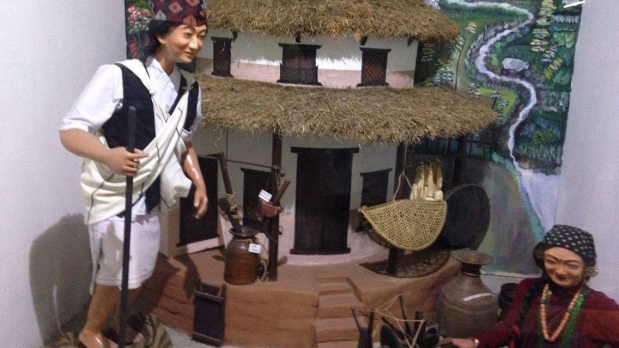Religion and Culture of Magar

There is a controversy about the religion and culture of Magar, as there are both Hinduism and Buddhism followers. Most Magars worship the same god and goddesses and observe festivals, as Hindus do, majority of them follow Khas-Bahun religious traditions, observe the same festivals almost exactly and many of them use Bahun priest. However, they also observe a number of their tribal rituals and ceremonies, festival for worshipping clan deities, and also employ a Lama to perform life cycle ceremonies in place of Brahmin priest.
Perhaps it is because, they had contact with the Khas-Chhetri for long, and therefore, their culture and religion is greatly influenced by Hindu practices. Although some cultural, rituals differences exist that arise from the distinction between these two Magarats-- Bara Magarat and Aathara Magarat. But, Magars from both the region have their own singing and dancing groups such as Sorathi, Ghatu, Kaura, Jhabre, Nachari, Salaijeu, Dohori and so forth.
The Magars worship nature, idols, spirits, and supernatural beings. Similarly, they also worship hunting gods and goddesses within their own families and outside, the gods of dead ancestors or their grandmothers and grandfathers. They have their own distinct practice of worship. They bury their dead-body and they have their own belief system regarding life after death. From the perspective of their faith system, they are worshipers of nature or as animists. They believe in Shamanism and their Dhami (faith-healer only heals) is called Dangar and their Jhakri (shaman, who involved both in healing and social rituals) is called Rama. The traditional spiritual and social leader of Magar used to be called Bhusal who was very influential in the early days.
Specially the Magar from Bara Magarath have an informal cultural institution, called Bheja, while the Magars from Aathara Magarat have similar institution called Pancha-Taluk or Pancha-Amal (where there are five-people elected democratically). These two institutions perform the overall traditional religious activities, organize social and agriculture-related festivities, brings about reforms in traditions and customs, strengthens social and production system, manages resources, settles cases and disputes and systematizes activities for recreation and social solidarity.
About Nepal Magar Tourism Society
Nepal Magar Tourism Society (NMTS)--the name itself is pretty self-explanatory that who we are and what we do. It was founded in the year 2010, with the aim to unite all the Magar tourism entrepreneurs from across the country and outside and promote tourism--together. It is a non-profit, non-governmental, and non-political organization formally registered with the District Administration Office, Kathmandu ...
read moreAbout Magar
Magar is one, of the 59 indigenous peoples of Nepal, recognized by the government as indigenous nationalities having own distinct language, culture, rituals and history. Their settlements stretch over the western and southern edges of Dhaulagiri Himalayan range and eastwards to the Gandaki River basin ...
read moreQuick Inquiry